Staff Reporter
COVID-19 Exposes Cold Chain Problems, Solutions
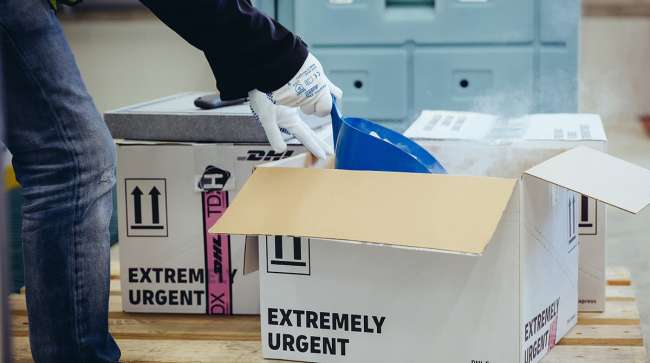
[Stay on top of transportation news: Get TTNews in your inbox.]
The coronavirus pandemic has presented new challenges and opportunities for innovation in cold chain shipments.
“I’ve been inundated with packaging providers and other manufacturers coming forward with innovative ideas about how to help manage the temperature regimen,” DHL Life Sciences and Health Care President Larry St Onge told Transport Topics. “The big focus at the moment has really been on the vaccines.”
The unique shipping requirements of pandemic-related medical supplies have led to redesigns of shipping containers and improved ways to track conditions. The Pfizer-BioNTech vaccine, for instance, needs to be kept at minus 94 degrees Fahrenheit (minus 70 Celsius). This will involve GPS-enabled thermal sensors with a control tower that will track the location and temperature of each vaccine shipment.
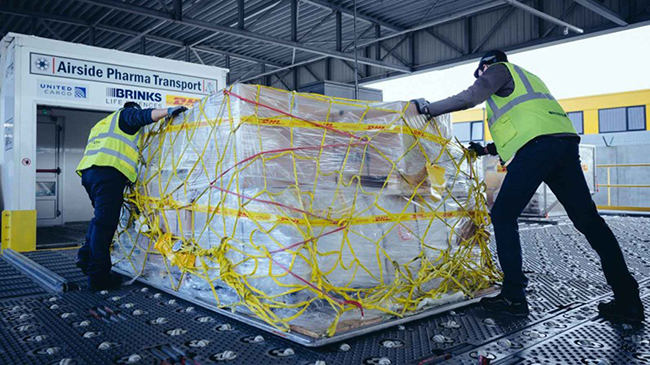
Vaccines are loaded for transport. (DHL)
“An example of innovation that we’ve seen come forward is the ability to be able to utilize passive containers where you can easily replace the dry ice and essentially have an effective temporary storage unit,” St Onge said. “Certainly we’re considering the context of the solutions we’re bringing to bear for customers as we go forward.”
Deutsche Post DHL Group ranks No. 7 on the Transport Topics Top 50 list of the largest global freight carriers. The company has been having ongoing conversations with pharmaceutical manufacturers and other partners to identify potential solutions from packaging to monitoring.
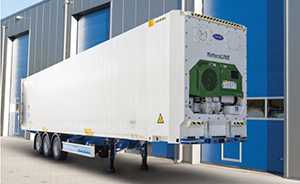
Carrier Pods have deep-freeze cooling, real-time telematics, data analytics and product visibility. (Carrier)
Carrier Global Corp. subsidiaries Sensitech and Carrier identified similar concerns when developing new Carrier Pods. The system was announced Oct. 27 to help address the unique vaccine distribution challenges brought on by the pandemic. It features deep-freeze cooling, real-time telematics, data analytics and product visibility.
“Many concerned with theft and diversion are adding additional layers of risk mitigation,” a Sensitech spokesperson told TT. “Others are more concerned with keeping a close eye on temperature changes for their vaccine shipments and want an early warning signal if the temperature is trending in the wrong direction.”
Boyle Transportation hauls vaccines year-round, so the pandemic is nothing new when it comes to strategy. What has been different for the company is vaccine manufacturers putting more emphasis on tracking conditions like temperature at the package level.
“It would often be performed at the truckload level, but not necessarily at the individual package level,” Andrew Boyle, the co-president of Boyle Transportation and vice chairman at American Trucking Associations, told TT.
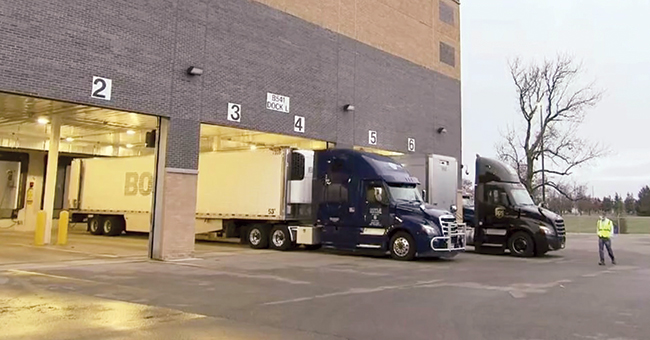
A Boyle Transportation and a UPS truck at Pfizer's Kalamazoo, Mich., plant. (Absolute Video of Kalamazoo)
The coronavirus pandemic has also drawn renewed attention to challenges that have long faced cold chain shipments.
“The pandemic has drawn incredible scrutiny on the cold chain because of the exact temperature requirements of these vaccines,” Varcode CEO Joe Battoe told TT.
Varcode develops a bar code that changes using chemicals to convey information such as whether a package was outside its designated temperature. PL Developments formed a strategic partnership with the company Jan. 13 to enhance the scale and availability of its monitoring technology.
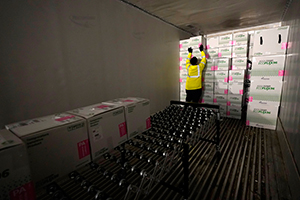
Boxes containing the Moderna COVID-19 vaccine are loaded into a truck for shipping at the McKesson distribution center in Olive Branch, Miss. (Paul Sancya, AP)
“COVID itself, not just the vaccine, has brought all these issues into focus and brought new challenges,” Battoe said. “There are wildly different temperature requirements at a scale that’s just absolutely unprecedented. That is driving innovation.”
The IQVIA Institute for Human Data Science estimates that the biopharma industry loses approximately $35 billion annually as a result of temperature-controlled logistics failures. The International Air Transport Association estimates that 25% of vaccines are degraded by the time they arrive at their destination.
Gartner analyst Andrew Stevens said that even prior to the pandemic he saw a shift in cold chain innovations aimed at real-time visibility and temperature monitoring.
“The cold chain is very much multilayered,” Stevens said, “in that there are approaches that you can take both in terms of protecting the inherent temperature of the product across all of its logistics and transportation phases.”
Want more news? Listen to today's daily briefing below or go here for more info:




